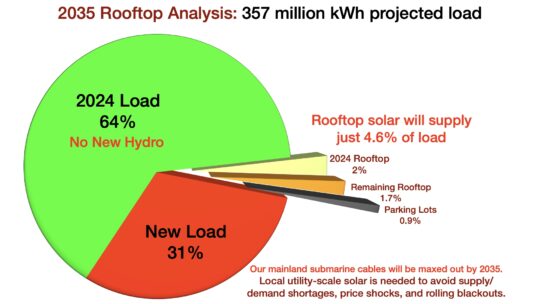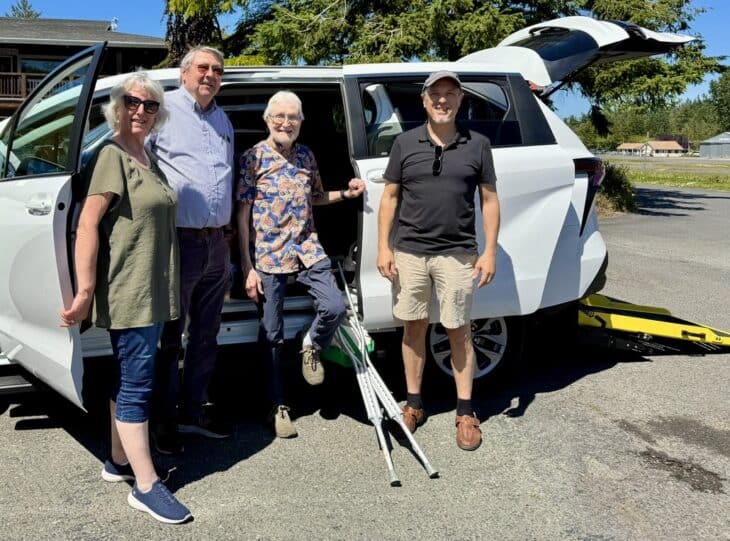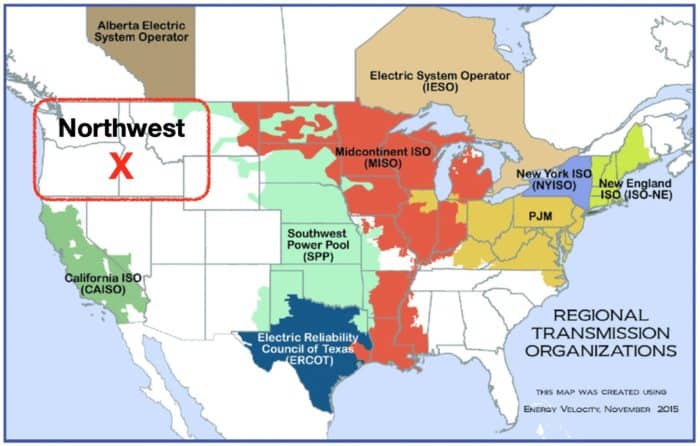Quick Fact: OPALCO’s rate for members who have rooftop solar
OPALCO’s solar rate is designed to encourage local renewable generation by ensuring that more of the cost of service is fairly allocated. Solar producers use the grid to buy and sell power. The OPALCO system acts like a storage battery for surplus energy produced by members. In 2022, to make the solar rate more just and equitable, OPALCO changed the solar rate structure to more accurately cover the cost of using the co-op grid.
- OPALCO’s solar program generates over 10 times more solar than the state average.
- Washington state requires that utilities offer a net metering rate for their solar customers until they reach 4% of the utility’s 1996 peak demand.
- Only eight electric companies in Washington State have reached that threshold, and most barely cross it. OPALCO is one of two utilities that has exceeded 300% of that threshold.
- Washington state allows utilities such as OPALCO to set their rates or tariff schedules once they have met the threshold.
- In 2021, OPALCO’s board began to evaluate the solar rate since we had far surpassed that threshold.
- The net metering rate pays solar members the retail rate for energy produced on someone’s roof which is much higher than the wholesale rate of power. The wholesale rate OPALCO usually buys power for is about 4.5¢ per kWh, versus approximately 13.5¢ per kWh retail.
- That difference is subsidized by all the other rate payers on the system including low-income members.
- Starting in 2022, the Board changed how solar members are paid for their exported solar power to be more just and equitable for everyone on the OPALCO grid.
- Solar producers still get the energy that they produce and immediately use for that full retail value.
- If the solar producers don’t use the energy, then they sell it back to OPALCO in the form of a credit on their bill. The 2025 rate that OPALCO is buying power from rooftop solar members is $0.086 kWh. This is still a subsidy from all OPALCO rate payers since OPALCO can buy power at ~$0.045 kWh from our wholesale power provider. The OPALCO board plans to continue equalizing that subsidy.
- OPALCO balances the dual goal of encouraging local solar energy while keeping the cost shift as equitable as possible for the rest of the membership.
- Once the Board reduced the overall subsidy to solar producers, they approved a new program that offered on-bill financing for solar and battery storage projects. Since 2022 more than $7.5M in local projects have been installed and the number of projects added to the system has seen significant growth. The new rate has not discouraged rooftop solar. It is just the opposite – the financing has strongly encouraged these projects. The on-bill financing program is through a USDA member re-lending program and does not cost the OPALCO membership anything.
- Co-op rate structures are fundamentally based on a cost-of-service model which means the costs to deliver power are distributed equally amongst the membership. The solar rate is not within those cost-of-service fundamentals.
- The 2022 solar rate helps ensure a more equitable cost of service for all members, which is especially important to reduce the burden for low-income members.
 Rooftop solar is an integral part of our future energy supply. Still, it plays a limited role in meeting our overall energy needs in San Juan County—supplying approximately 5% of the total load. Utility-scale solar can be grant-funded and built for a small fraction of rooftop solar cost while helping reduce the impact of mainland price shocks and outages. OPALCO estimates we can supply 10 times more energy than rooftop solar at about one-tenth of the price.
Rooftop solar is an integral part of our future energy supply. Still, it plays a limited role in meeting our overall energy needs in San Juan County—supplying approximately 5% of the total load. Utility-scale solar can be grant-funded and built for a small fraction of rooftop solar cost while helping reduce the impact of mainland price shocks and outages. OPALCO estimates we can supply 10 times more energy than rooftop solar at about one-tenth of the price.
There is no perfect solution for our future energy needs. Each has its pros and cons. Taken together, we can reduce climate pollution, greenhouse gas emissions, rate shocks, and our dependence on the mainland while helping the vulnerable members who can’t afford solar.
Learn more:



